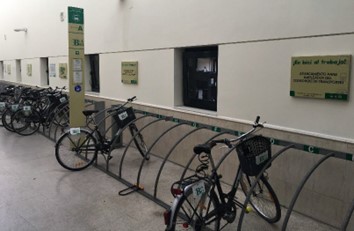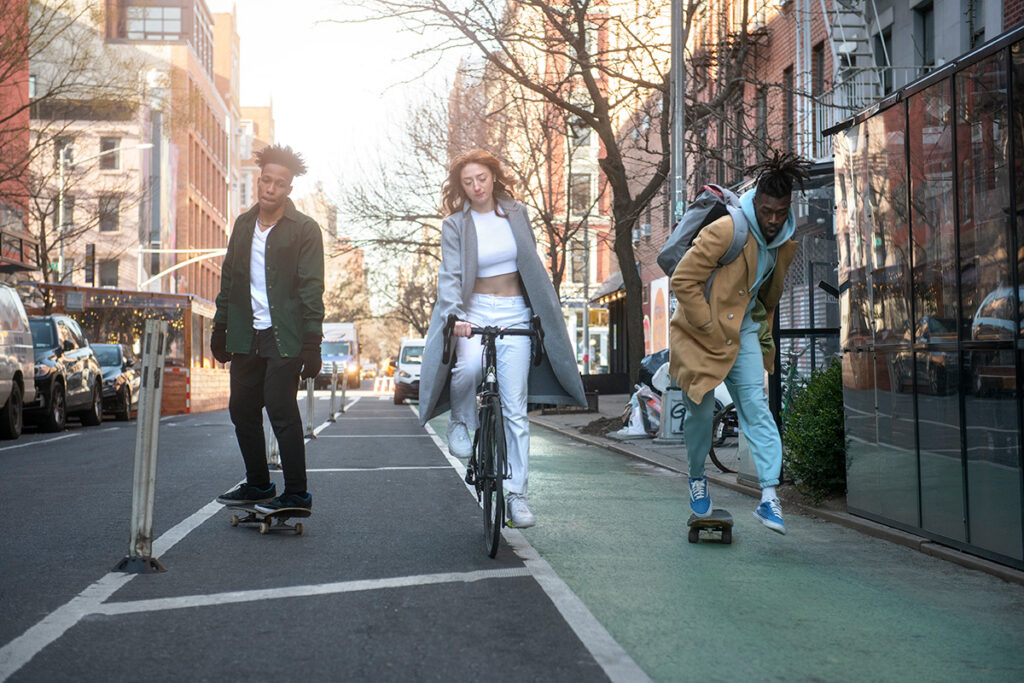Human-Powered Mobility
HUMAN-POWERED
SUSTAINABLE
MOBILITY
Introduction
Human powered mobility refers to moving around the city on foot or by bicycle. These means of transport are ideal for meeting the transport demand within our cities. Nowadays, these modes can be “enhanced” in order to achieve longer distances with personal mobility vehicles running on electricity, consuming very low energy quantities, not emitting local pollution and being silent.
Description
Active mobility covers walking and cycling as well as other single human transport modes (scooters, skateboards, etc.) as modes of urban – or in some cases even inter-urban – transportation. These forms of mobility should be considered on the same level as motorised modes of transport for their ability to move people around and their contribution to last mile services in our cities.
Around half of the trips we make with our cars are shorter than 5 km and a third of our car trips are less than 3 km. Many of these trips could be done by walking and cycling.
Active mobility is the cleanest type of transportation, being as well the cheapest one. It improves the air quality in our cities, reduces the level of noise, saves energy resources, and it is a good way to improve our health and well-being.
Considering all their advantages, it is important, thus, to recognise walking and cycling in urban development planning and policies, and to prioritise these transport modes by providing adequate urban spaces and infrastructures adapted to these kinds of mobility.
As a rule of thumb, walking is competitive (against other transport means in the city) for distances of up to 1 km or 15 minutes; and cycling for distances of up to 5 km or 20 minutes. The average car speed in cities is under 40 km/hour.

Main Features
- Healthy
- Cheap
- Clean transport mean
- Better air quality
- Less environmental impacts
- Competitive in a 15- minute city

Image by DPG as partner in OPTITRANS EU project bike-bus integration experience
Advantages and challenges
+ Human-powered mobility is a boost to human
+ Cycling and walking are the cleanest ways of transport and the cheapest as well
+ It improves air quality in urban areas as no pollution is emitted
+ Human-powered mobility can also reduce traffic accidents and congestion in our cities as well as noise and air pollution
+ It is a competitive transport mode if we speak about time in distances of less than 5 km
+ These transport modes are silent and improve the liveability in our cities
+ Personal mobility vehicles such as scooters, electric bikes, and others have a higher environmental impact than walking and cycling but are much better than regular transport modes for higher distances.
– Depending on the urban fabric, these modes of transport sometimes can be dangerous when no proper urban spaces and infrastructures are created.
– In dispersed cities, the distances are too long for these transport modes.
Further Information


